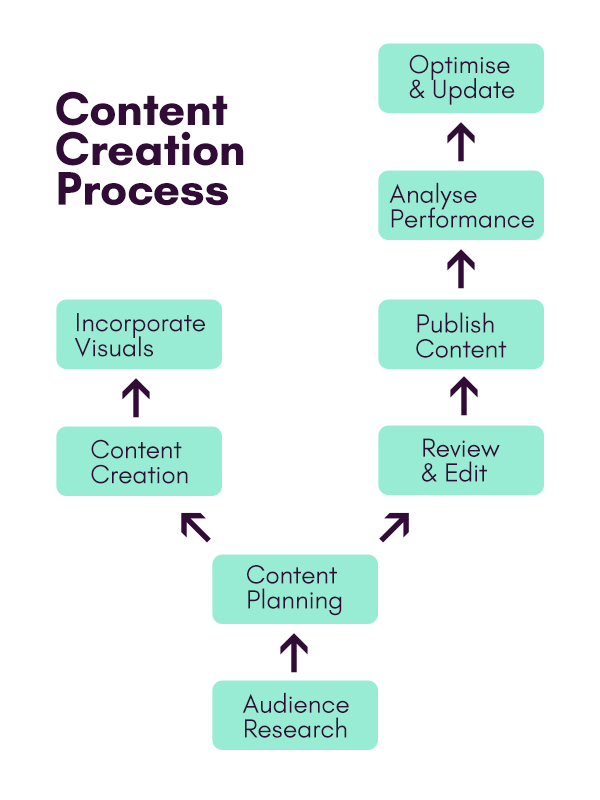Quality content is important for any successful digital presence. It goes beyond words and visuals. It connects, informs, and inspires action. But what exactly does “quality content” mean, and why does it matter?
What is Quality Content?
Quality content is content that delivers value to the audience. It is relevant, informative, and designed with the user in mind. Whether it’s a blog post, video, or infographic, quality content answers questions, solves problems, or entertains effectively.
For example:
- Good Quality Content: A detailed blog post that explains “how to prepare for a marathon”, backed by practical training tips, a training plan, and personal experiences.
- Poor Quality Content: A generic article stuffed with keywords around the topic but offers no real value or actionable advice. It often includes repetitive content that makes the text appear lengthy to give the impression of depth.
Characteristics of High-Quality Content
High-quality content stands out because it resonates with the audience and reflects the core principles of E-E-A-T (Experience, Expertise, Authoritativeness, and Trustworthiness).
- Relevance: Good content meets the audience’s specific needs. For example, a guide for small businesses on improving social media is helpful and targeted.
- Originality: Quality content offers new ideas or unique insights. It avoids repeating common information and instead brings fresh value to the audience.
- Accuracy: Reliable content is based on facts. Outdated or false details harm trust, while accurate information builds credibility.
- Readability: Clear and simple writing makes content easy to understand. Short sentences, simple words, and good organization help get the message across.
- Engagement: Great content grabs attention with stories, visuals, or interactive elements. It keeps readers interested and encourages them to stay connected.
The Relationship Between Quality Content and SEO
Search engines prioritise content that aligns with user intent and provides value. However, it’s not the sole factor in search rankings.
How Quality Content Supports SEO
- Improved Rankings: Search engines rank pages that are well-structured, informative, and meet user needs.
- Organic Traffic: Engaging content attracts clicks and keeps readers on the page longer, reducing bounce rates.
- Link Building: Quality content is more likely to be shared and linked by other sites, boosting authority.
Quality Content Alone is Not Enough
While important, quality content must work alongside:
- Strong technical SEO (i.e. fast-loading pages, mobile optimisation).
- Strategic keyword research and placement.
- Backlink strategies.
Examples of Content That Works for SEO
- Good Example: A running blog with clear training plans, visuals of exercises, and answers to common questions like “How can I prevent injuries during a marathon?”
- Poor Example: A running blog stuffed with irrelevant keywords like “best running tips” but lacking useful information or actionable advice, such as proper training techniques or injury prevention strategies.
The Impact of Quality Content
Beyond search engines, quality content builds trust and loyalty. Consistently delivering valuable content positions your brand as an authority and keeps audiences coming back.
Why Quality Content Retains Customers
- Trust Building: Accurate and helpful information shows reliability, encouraging repeat visits.
- Emotional Connection: Storytelling and relatable examples make your content memorable.
- Engagement: Interactive and engaging content keeps your audience invested.
Long-Term Benefits
Loyal customers are more likely to:
- Recommend your brand to others.
- Engage with your products or services.
- Return for future updates or offerings.
Strategies for Creating High-Quality Content
- Understand Your Audience: Research demographics, preferences, and challenges. Tailor content to their specific needs.
- Plan and Structure: Organise with clear headings and sections. Use bullet points, lists, and short paragraphs for readability.
- Incorporate Visual: Add images, infographics, or videos to enhance the message. Ensure visuals align with the content’s purpose.
- Focus on Value: Answer common questions and provide actionable tips. Avoid fluff or unnecessary filler.
- Maintain Consistency: Update content regularly to keep it relevant. Post consistently to retain audience interest.

How to Measure Content Quality
To ensure your content is effective, monitor its performance:
- Engagement Metrics: Time on page, comments, and shares indicate reader interest.
- Traffic: Organic visits show how well your content ranks.
- Conversion Rates: How many readers take the desired action, like signing up for a newsletter or making a purchase.
Conclusion
Quality content is the foundation of digital success. It not only supports SEO but also builds customer trust and loyalty. By creating relevant, engaging, and valuable content, you set your brand apart and cultivate lasting relationships with your audience.
